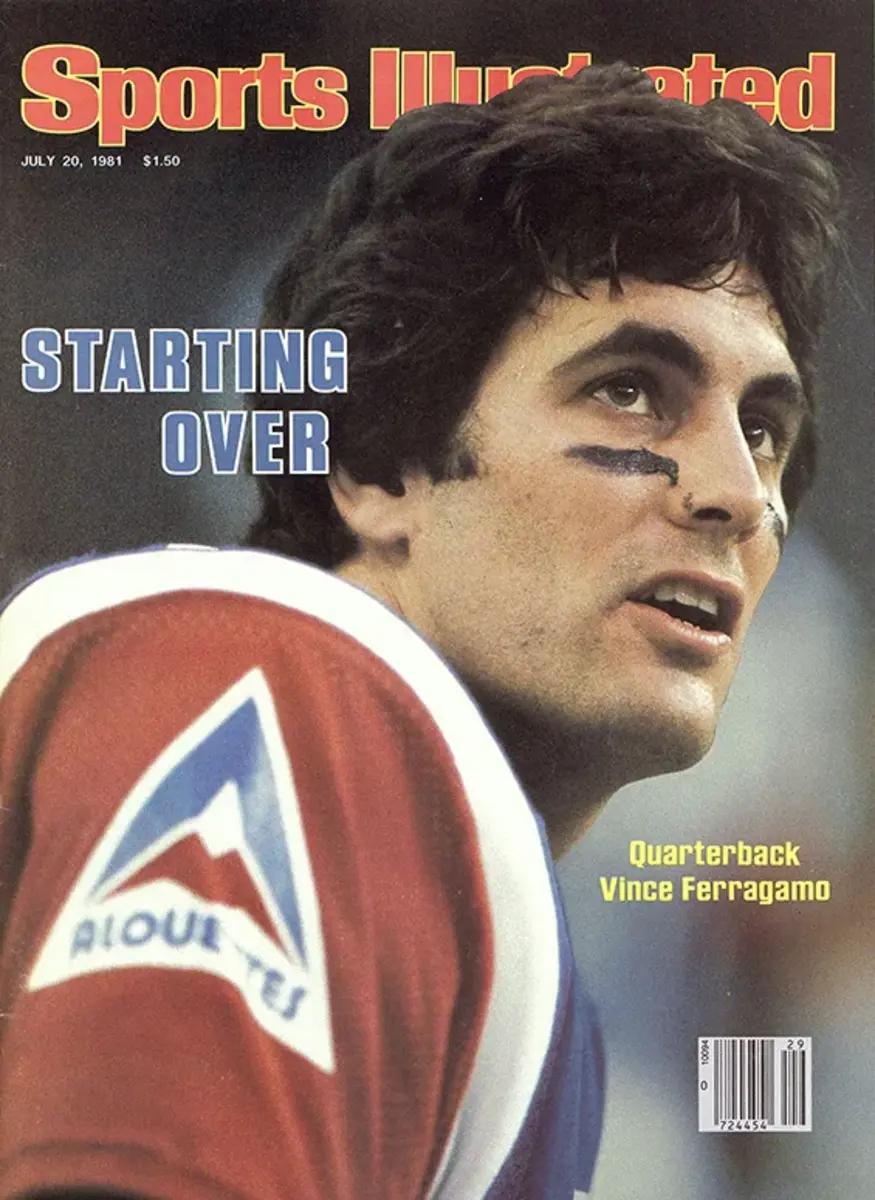SI:AM | More Microphones on Players, Please
Good morning, I’m Dan Gartland. There’s no question what my favorite part of the MLB All-Star Game is.
In today’s SI:AM:
⚾ The man who helps Cuba’s top athletes
If you're reading this on SI.com, you can sign up to get this free newsletter in your inbox each weekday at SI.com/newsletters.
This is the best part of the All-Star Game
The concept of the all-star game has lost much of its luster since its invention in 1933. At a time when the only way to see a sport’s best players was to wait for them to come to town, the all-star game gave fans a chance to see all the guys worth seeing all at once. But in the era of national television, Youtube highlights, NFL Red Zone and social media, we can watch the best players in the world whenever we want, so what’s the point of an all-star game?
Fox has found the perfect antidote to fans’ antipathy for the game itself by making the MLB All-Star Game the most entertaining baseball broadcast of the year. Because the game is meaningless, Fox can do all sorts of fun things with the players that it wouldn’t be able to do in a game that actually mattered. Sure, ESPN has started putting microphones on players and doing in-game interviews on Sunday Night Baseball, but Fox miked up a whole bunch of players during last night’s game—including pitchers on the mound, which you’d never see in a real game.
Yankees teammates Nestor Cortes and Jose Trevino were miked-up at the same time, with Cortes simply telling his catcher what he was going to throw rather than Trevino giving signals. Trevino kept the microphone on during his at-bat in the top of the next inning and could be heard saying, “Wow, I can’t believe I’m an All-Star, man. This is unreal.”
Blue Jays pitcher Alek Manoah also wore a microphone while he pitched the second inning and, though it was a bit awkward at first, eventually warmed up and let John Smoltz tell him what to throw. It was hilarious to hear Manoah yell “By you!” when he blew a fastball past a hitter. (You can watch his whole inning here.)
MLB has uploaded an 11-minute supercut of the best miked-up moments from last night’s game to its YouTube channel and I can’t recommend it highly enough.
In addition to Manoah, Cortes and Trevino, you also get to hear from Aaron Judge, Giancarlo Stanton, Mariners rookie Julio Rodriguez and Liam Hendriks, who kept it clean after a viral (and profane) miked-up snafu last year.
Hendriks got the final out of the eighth inning on a flyout to Rodriguez in center, after which Rodriguez joked that he was going to throw the ball into the stands instead of giving it to the three-time All-Star. Hendriks yelled, “Julio!” before both players ran off the field with ear-to-ear grins.
The miked-up players are the only thing that makes the All-Star Game worth watching. If it was broadcast like any other regular season game, it would be a total drag. But hearing the players on the field offers a much-appreciated window into their personalities. I understand why players might be hesitant to do on-field interviews in the middle of a game, but MLB would be smart to start putting microphones on players and releasing videos after the fact like the NFL does. Fans would eat that up. It would be like having an All-Star Game every week.
The best of Sports Illustrated

For today’s Daily Cover, Greg Bishop shadowed Billy Henderson, who has made a career out of helping athletes defect from Cuba:
When he leaves for a mission Billy tells his family, including his four children, ages 2 through 16, that he’s headed off to work with athletes—implying that he’s training them, which is partly true. He maintains that secrecy isn’t why he conceals the full nature of his gig, but because he doesn’t want anyone to tell him he should stop.
Clayton Kershaw soaked up every moment of his All-Star Game start at Dodger Stadium, Stephanie Apstein writes. … Emma Baccellieri explains Rob Manfred’s ignorant comments about minor league pay and the mounting pressure for MLB to pay prospects a living wage. … Avi Creditor ranks the teams left standing at the quarterfinal stage of the Women’s Euros.
Around the sports world
Hornets forward Miles Bridges faces domestic violence charges in Los Angeles. … NASCAR has announced plans for its first street race, to be held in Chicago next year. … Even though it allowed him to have the best season of his career for a championship-winning team, Andrew Wiggins says he regrets getting the COVID-19 vaccine. … The real-life version of quidditch is changing its name to distance itself from J.K. Rowling.
The top five...
… things I saw yesterday:
5. Ryan Helsley painting the corner at 103 mph.
4. This video of Brewers draft pick Jurrangelo Cijntje, a switch-pitcher who can throw 92 mph as a lefty and 96 as a righty.
3. Giancarlo Stanton’s 457-foot home run and this photo of the ball compressed against his bat.
2. Clayton Kershaw meeting a young fan after the All-Star Game.
1. Andrés Giménez starting a double play with a behind-the-back toss.
SIQ
Rory McIlroy won the Open Championship on this day in 2014. How much money did his father win after cashing in on a 10-year-old bet that McIlroy would win the tournament before turning 26?
- $24,000
- $92,000
- $106,000
- $171,000
Yesterday’s SIQ: Who beat Tom Watson in a playoff at the 2009 Open Championship?
Answer: Stewart Cink. But all anyone remembers about that tournament is how close Watson came to winning it. The 59-year-old Watson was nine months removed from hip replacement surgery. At the Masters in April, he shot a second-round 83 and missed the cut by 12 shots. His near victory, 26 years after his last major championship, was unforgettable. Here’s what Michael Bamberger wrote in that week’s issue of SI:
This is what it's all about: losing. Really. You're going to win some and lose more. That was the point of last week's British Open at Turnberry. Everyone paid more attention to the loser than the winner, right? The loser, an old man—nearly 60!—lost with class and heart and serenity and tired legs. He tried to turn back time. It was a gallant effort, and he almost pulled it off.
The 2009 Open was held at Turnberry, the site of Watson’s famous “Duel in the Sun” with Jack Nicklaus. But while Watson birdied four of his last six holes in that famous tournament, he faded in crunch time 32 years later, making a bogey on the 72nd hole when a par would have won him the tournament. That set up the playoff with Cink, and Watson was not up to the task. While Cink finished the four-hole playoff at 2-under par, Watson was 4-over, thus ending his fairytale in excruciating fashion. The headline on Bamberger’s story summed it up perfectly: “Heartbreaker.”
From the Vault: July 20, 1981

The Rams had a quarterback controversy on their hands in the early 1980s. Pat Haden, the former USC star, had assumed the starting role in ’77 but broke a finger late in the ’79 season, at which point Vince Ferragamo took over. Ferragamo led the Rams to a 4–1 regular season finish and won two playoff games to lead them to their first Super Bowl appearance. (They lost to the Steelers.)
Haden began the 1980 season as the starter but was injured in the first game and Ferragamo took the reins again. He played well, throwing 30 touchdown passes (tied for second in the league), but Rams management was lowballing him in extension talks. While Ferragamo made a measly $52,000, Haden was paid $200,000 to back him up. The two didn’t get along, with Ferragamo complaining when Haden was inserted in relief. That, coupled with other Rams’ players disputes with the front office, led to a Dec. 8, 1980, article in Sports Illustrated about how the team was succeeding in spite of the “bickering.”
“I rate myself at the top,” Ferragamo is quoted as saying in that story. “I’d like to get paid accordingly. But I’m not writing the check. If they have respect for you, you’ll get paid. If things don’t work out, we’ve got Canada or the free-agent market.”
It might seem weird that Ferragamo mentioned Canada before free agency, but it was telling. In April 1981, he signed a massive contract with the CFL’s Montreal Alouettes. (The Alouettes signed several other high-priced NFL players as well.) Jack McCallum’s story about Ferragamo’s French Canadian foray pegs his salary at $400,000 (the same as the Steelers were paying Terry Bradshaw), while The New York Times reported that the deal was worth up to $500,000 in his first year, plus a signing bonus of $300,000. Meanwhile, the average CFL salary was just $40,000 and many players worked day jobs.
McCallum’s story ran after Ferragamo had played two games for Montreal. It portrays him as a fish out of water, both on the (110-yard) field and in his daily life in Montreal. While Ferragamo’s wife complained about the lack of Mexican restaurants in Quebec, the bigger concern was Ferragamo’s downright dismal play. He struggled to read coverages against a 12-man defense and, as a traditional drop-back passer, was ill-suited for the Canadian game, where wider playing fields are an advantage for mobile quarterbacks.
The Als went 3–13 that season. Ferragamo completed 51.1% of his passes, with seven touchdowns and 25 interceptions in 13 games. The CFL experiment having failed, Ferragamo returned to the Rams in ’82.
Jeff Pearlman caught up with Ferragamo for a brief item in the July 21, 1997, issue of Sports Illustrated, looking back on that ’81 cover. Ferragamo, a Southern California native, explained that the only thing that made him leave his hometown was the money.
“It was strictly business on my part,” he said. “The emotional stuff was taken out of the equation. I love California, but I was thinking about my career.”
Check out more of SI’s archives and historic images at vault.si.com.
Sports Illustrated may receive compensation for some links to products and services on this website.
